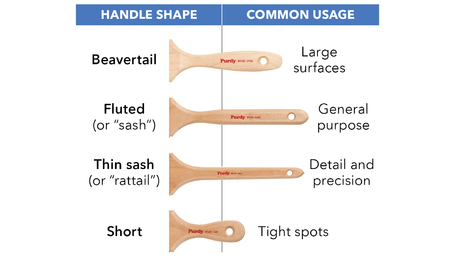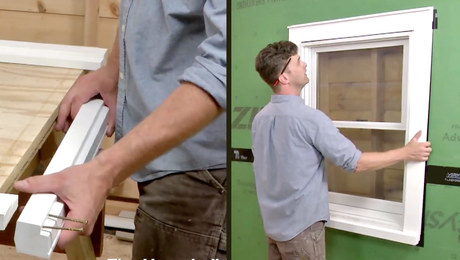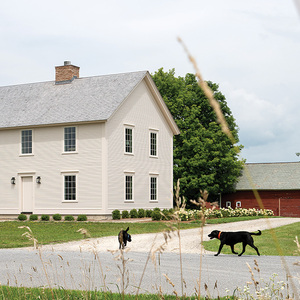In issue #182 P63 it shows a connector used for Romex and says that these connectors are code approved and are used instead of wire nuts and junction boxes.
I am currently remodeling and need to extend several runs, without having to install a box.
Do any of you have any experience with these?
Also, searching online, I could find nothing like this.
Any comments or suggestions are appreciated.
Dean



















Replies
Your scaring me,Dean...you cannot just splice on additional wire...all conections must be made in an approved electrical box...please get a copy of your local electrical code and read it carfully before you even consider attempting your own wiring.
Aye, be it the Grail ye seek, ah Laddie? The Holy Electrical Connector That Doesn't Need a Junction Box Grail! That, like a durable American car, is a mythic beast.
I needed the same thing about a month back, and came up with nothing after much searching and lots of expert opinion.
Options for you to consider:
- Rotate the existing box so it faces the wall opposite where the hole is now that you need to cover.
- Get yourself enough slack in the line to go up into the attic/basement, then put your junction box there
- put a blank wall plate over your existing junction box. Some of the newer ones can be painted and are screwless.
Believe me, we could ALL use exactly what you are looking for, but there isn't such a beast.
BTW, those connectors you saw were wire nut replacements. They work really well - just make sure the wire you feed in is absolutely straight! If you goof up, you can disassemble them to for another stab at it.
Rebuilding my home in Cypress, CA
Also a CRX fanatic!
Am I the only one who is slightly annoyed by that article? The implication being that Mr. Benson's appproach is superior and that if your design doesn't fit his 'modules' you are somehow ignorant.OTOH, some of the ideas are good. I suppose in tract housing, this modular appproach won't really create any more 'cookie cutter' houses than current developers do.Bill
Dude, what are you talking about? I thought we were talking about those little plastic backstab connectors that Ideal makes... that and nonexistant behind the wall junctions.Rebuilding my home in Cypress, CA
Also a CRX fanatic!
Didn't mean to sidetrack the thread- OP was referring to an article in the latest FH by Tedd Benson about new building techniques, where the romex connectors were mentioned. I was referring to that article, dude.Bill
I get annoyed by Besnon & the Besonite articles as well but I think it's mostly because he's really kicking the lid of the traditional way we build houses. I am a bit skeptical on the costs & times to build following his beliefs.
Has anyone done a comparative build of 2 identical houses 1 using the traditional methods and the other Bensonited tracking the costs & elapsed time from the point where the plans are put in the GCs hands to receipt of the CO? I'm curious to see what the results would be.
And on those electrical connections (& the plumbing too), are they accepted by code or does one have to do the engineering & politicking to get the locals to allow them?
Has anyone done a comparative build of 2 identical houses 1 using the traditional methods and the other Bensonited tracking the costs & elapsed time from the point where the plans are put in the GCs hands to receipt of the CO? I'm curious to see what the results would be.
It's pretty easy to compare the cost of a traditionally built house with a factory built. Just get an estimate from a traditional builder, and then give your plans to a company that builds modules in a factory. The computer programs are so good now that it costs almost nothing for them to give you an estimate. All you'd have to add on would be the foundation, and the labor (and crane) to assemble the modules. I suspect the cost (and time) comes out about the same, or neither method would stay in business long.
This is not exactly the same as a Bensonited house. The modules I've seen use some advanced technology (like PEX piping), but nowhere near what Benson suggests with the "mechanical core" and the electrical chases in the walls.
Any of us that've been around construction for even a week know that estimates are a theory and not proven or disproved until the completion. I don't expect my final product to be too far off what I estimate at but we're talking about significantly different approaches. I think a side-by-side comp will expose the pros & cons of the 2 and if the Bensonites theory is really true.
I agree, mechanical stacks are a good idea but not what we see today.
I have to go along a wee bit with Bill(PGproject) here, I can't imagine getting these open access methods past the inspectors evil eye. One glaring problem that I see are draft stops and fire blocking requirements that must be met to get past the final. From his pics at the plant and the gee wiz factor photos posted in the article, it looks like fire spread in hidden spaces, although accessible, is a definite area of concern.
Did anyone read what one man wrote at http://electrical-contractor.net/ubb/Forum1/HTML/006800.htmlTake a look at the pictures he posted. Reminds me of the push in connectors in the back of some receptacles.
I think those burned and scorched connectors look a lot like the ones the original poster was talking about. However, my comment was in regard to fire blocking and draft stops required by UBC in walls and covered locations in ceilings etc. Are you sure you sent the pics to the correct person on this thread?
Even if you found them I don't think they would do what you want. The connections in the article are in the chases and therefore accessible. They might replace a wire-nutted connection in a box located in an attic but not a connection within a wall.
That's what I took from it any way.
Exacltyhttp://electrical-contractor.net/ubb/Forum1/HTML/006800.html
Looks like a plastic version of the old standard Relock wiring devices used in commercial lighting application for many years. Relock is a mc type cable and great for new lighting installs in commercial construction. None of it is burried in walls or under insulation that I have ever wrked on, and it is a PITA to make additions two if you don't have the manufactured wips and hubs that you need for a specific application.
Looks like the plastic model is just a scaled down and field wired version of something that has been used for years. Code approval is pretty easy when something is just a knockoff of something that has been around for years.
Relock is pretty bomb proof in the field. Factory made plug-ins and wips, etc., mean an electrician would have to work pretty hard to screw them up. These plastic things look like they would be easy to srew up, right out of the box.
Those picture in the link tell me that the electrician on that job was a guy that didn't give a sh** about his work or it is an extreme case of abuse. Could be other factors, but overall it looks like a cheap shot at a product that someone doesn't like.
Dave
I've never seen those in the States. I got the impression from the article that they would be used when assembling the modules of a factory-built house. The article definitely suggests they would not be used in a box.